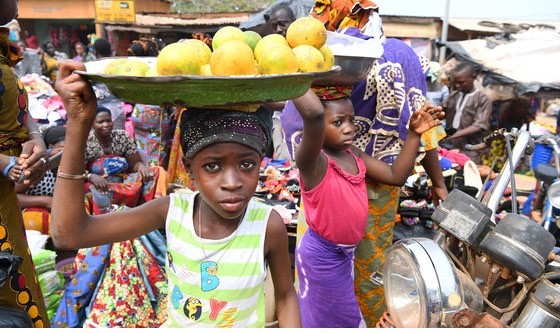Around the world, more than 70% of child labor is found in the agriculture sector—an estimated 108 million boys and girls between the ages of 5 and 17, according to estimates from the International Labor Organization (ILO) and the UN Food and Agriculture Organization (FAO).
The Agenda for Sustainable Development aims to eliminate all child labor by 2030 (SDG target 8.7). This will not be easy. Child labor in agriculture is often effectively invisible because of limited data and because farming remains largely unregulated in many countries. In addition, children working in small-scale agricultural activities remain neglected as organizations focus on battling child labor in global supply chains. Successfully addressing the problem of child labor will require further coordinated research and policy efforts.
A global conference in Brussels marking the World Day Against Child Labor (June 12), United to End Child Labor in Agriculture, explored this challenge, with the theme “Children shouldn’t work in fields, but on dreams!” The event was co-organized by FAO, ILO, and the European Commission’s Directorate-General for International Cooperation and Development (DEVCO).
Participants agreed on a call to focus attention on addressing child labor in local food supply chains and in subsistence farming, where the majority of child agricultural labor takes place. FAO Assistant Director-General for Economic and Social Development Maximo Torero highlighted the need for a cross-sectoral approach focusing on agriculture, rural development, and poverty reduction to help alleviate the child labor scourge.
“Each of these sectors and work areas have concrete potential to substantially contribute to the progress towards ending child labor, which are largely untapped,” concluded Torero.
IFPRI has collaborated with FAO, the International Fund for Agricultural Development (IFAD), DEVCO, ILO, and the International Union of Food, Agricultural, Hotel, Restaurant, Catering, Tobacco and Allied Workers’ Association (IUF) to identify the root causes of child labor in agriculture. IFPRI’s research on childhood nutrition and labor confirm that poverty combined with prime-age adult mortality often push young children into child labor in various parts of the world. Research has also suggested that free meal offerings can work to keep children in school.
Rob Vos, director of IFPRI’s Markets, Trade and Institutions Division, emphasizes this is important research, but noted at the same time that, “we need to think beyond keeping children in schools and apply labor laws to prevent child labor. We need to invest in rural livelihoods such that farm households no longer feel a need to employ their children in productive labor that is detrimental to child growth.”
Swati Malhotra is a Communications Specialist with IFPRI’s Markets, Trade, and Institutions Division.







